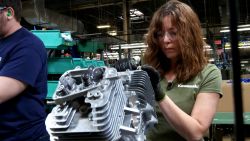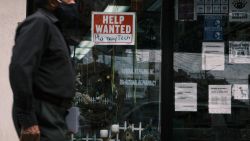Editor’s Note: Alexander Alonso is the Society for Human Resource Management’s (SHRM’s) chief knowledge officer leading operations for SHRM’s Certified Professional and Senior Certified Professional certifications, research functions and the SHRM Knowledge Advisor service. The opinions expressed in this commentary are his own.

The world of work will never be the same. The coronavirus has fundamentally changed every aspect of business — from our commute to our work environment to how we interact with our colleagues.
Business is not running as usual — that much is certain. Research from the Society for Human Resource Management (SHRM) found 71% of employers are struggling to adjust to remote work, 65% say maintaining employee morale has been a challenge, and more than a third are facing difficulties with company culture. While this paints a grim picture, it also presents an opportunity to reshape and reinvent the workplace for a post-Covid-19 reality.
The challenge is: How will we shape the workplace into something new without destroying components of its past that are worth keeping?
For one, remote work will become a much more widely recognized alternative to location-based work. In fact, 64% of employees are already teleworking most of the time, according to a study from SHRM and Oxford Economics. Moving forward, companies are likely to be more accepting of employee requests to work from home, and some could even make entire operations remote once their office leases are up.
For the businesses that do decide to keep their centralized workspaces, the office of tomorrow will be designed to keep people working together while physically apart. Companies will kill open floorplans and shared workspaces. We will see the rise of virtual workspaces in collocated office buildings and the return of offices or closed off cubicles.
Simply put, companies might have to redesign their workplace among the likes of Cushman & Wakefield’s model for a “6 Feet Office,” a conceptual design of how offices might look once we get back to work. Additionally, offices may embed spaces for daily temperature checks, and visiting a skyscraper or corporate campus may require a security check-in that includes a body temperature reading. Telemedicine services offered through work will surge as companies recognize the value of distance care.
HR and business departments must collaborate — instead of showing an organization is recession-proof, an organization must prove it is “pandemic proof.”
Companies will have stricter requirements for workwear, too. General Motors recently announced that employees returning to work in certain plants must wear personal protective equipment (PPE). Currently, over half of essential businesses, particularly in food, accommodation and manufacturing services, are allowing PPE in their uniforms, including gloves and facemasks, SHRM research found. That’s likely to continue post-Covid.
There will be millions of lives lost due to Covid-19 globally, and as everyone copes with its effects, employers will also need to pay more attention to mental health. On a scale of “never,” “rarely,” “sometimes” and “often,” nearly one in four employees said they are now “often” feeling down, depressed or hopeless, SHRM research shows. In the near future, it’s not unreasonable to expect health care providers to visit the workplace, and for mental health practitioners to become permanent staff.
Most importantly, however, we will see companies reaffirm the need for strong chief human resource officers (CHRO) to weather this pandemic and future threats. A good CHRO can reinvent the enterprise and build skillsets. A great CHRO can keep the workforce going through a crisis and protect staff and stakeholders. The best CHROs are responding to Covid-19 with next-level ingenuity — their organizations are not only surviving, but thriving.
The US workforce is no stranger to crises. As history teaches us: This, too, shall pass. In the post-Covid-19 world of work, all of us will have to be capable of adapting.

























